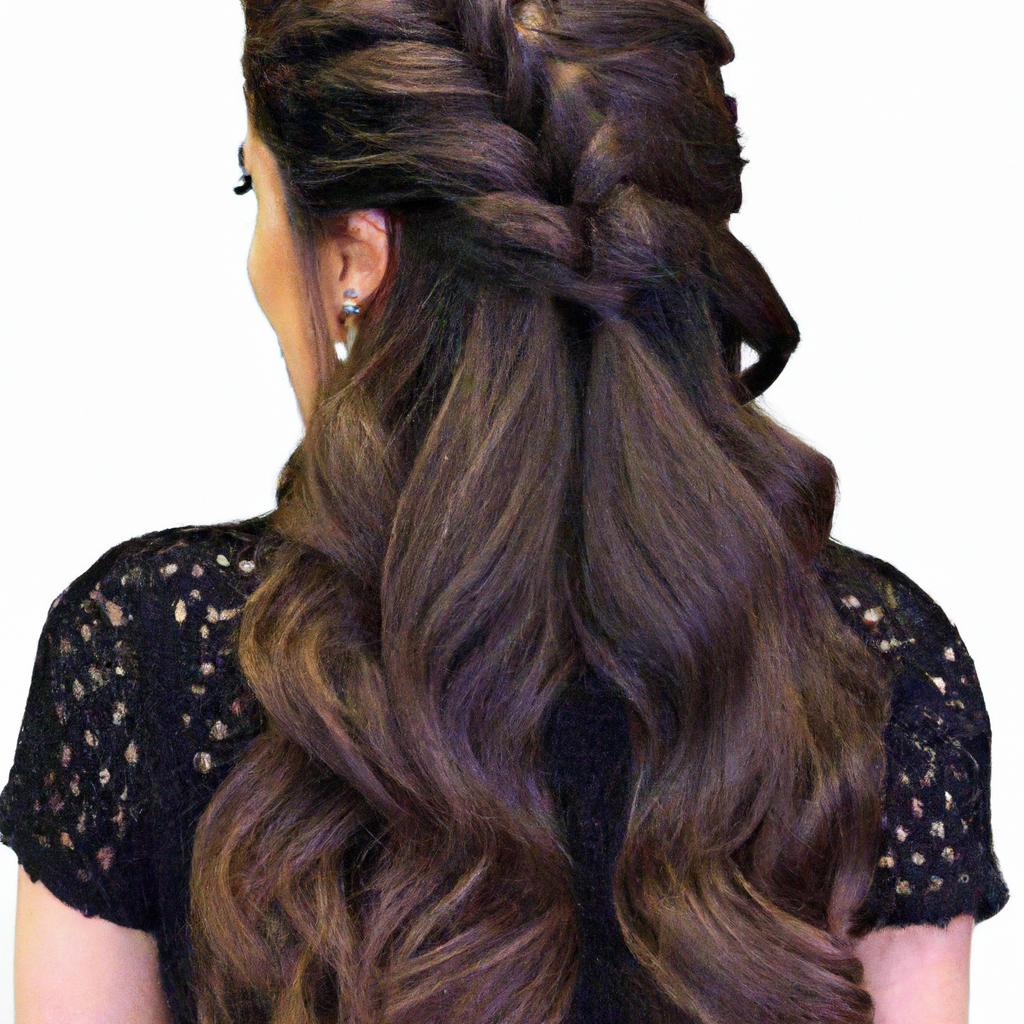Traveling can be exciting and adventurous, but it can also wreak havoc on your hair. From the dry air in airplanes to the harsh sun and different climates, our hair goes through a lot. However, with a few simple tips and tricks, you can ensure that your hair stays healthy and luscious, no matter where your travels take you. So, if you’re wondering how to care for your hair while on the go, look no further. In this article, we will explore some easy and practical ways to keep your hair looking its best, even when you’re far away from home. Whether you’re a frequent traveler or planning your dream vacation, these hair care tips will have you ready to jet-set in style.
Protecting Your Hair from the Elements
Covering Your Hair with a Hat or Scarf
When traveling, it’s important to protect your hair from the elements. One of the easiest ways to do this is by covering your hair with a hat or scarf. Not only will this shield your hair from the sun’s harmful UV rays, but it can also protect your strands from wind damage and excessive sun exposure. Plus, wearing a stylish hat or scarf can add a fashionable touch to your travel outfits!
Using a UV Protectant Spray
In addition to covering your hair, using a UV protectant spray is essential to safeguard your locks from the sun. These sprays typically contain ingredients like antioxidants and UV filters that can help minimize the damage caused by UV rays. Simply spray the product onto your hair before heading out in the sun, and reapply as needed throughout the day.
Avoiding Excessive Sun Exposure
While some sun exposure is inevitable while traveling, it’s important to avoid excessive sun exposure to protect your hair. Spending long hours under the scorching sun can cause your hair to become dry, brittle, and faded. Be mindful of how much time you spend in direct sunlight and take breaks in shaded areas whenever possible.
Protecting Your Hair from Wind Damage
Strong winds can be incredibly damaging to your hair, causing tangles, breakage, and frizz. To protect your hair from wind damage, consider tying it back in a loose braid or bun. This will help prevent your hair from getting tangled and minimize the risk of breakage. Additionally, using a lightweight hair oil or spray with anti-frizz properties can help combat the effects of wind on your hair.
Using a Moisturizing Conditioner
Traveling can often leave your hair feeling dry and dehydrated. To combat this, using a moisturizing conditioner is key. Look for a nourishing conditioner that is specifically designed to hydrate and replenish your hair. Apply the conditioner after shampooing, focusing on the ends of your hair, and leave it on for a few minutes before rinsing thoroughly. This will help restore moisture and leave your hair feeling soft and healthy.
Maintaining Proper Hydration
Using a Hydrating Shampoo
To maintain proper hydration while traveling, using a hydrating shampoo is crucial. Look for a shampoo that is specifically formulated to moisturize and nourish your hair. These shampoos often contain ingredients like coconut oil, argan oil, or shea butter, which can help restore moisture and leave your hair feeling hydrated and smooth.
Applying a Leave-In Conditioner
A leave-in conditioner is another great tool for maintaining proper hydration while on the go. These products are typically lightweight and can be applied to damp or dry hair. Leave-in conditioners work by providing an extra layer of moisture and protection, helping to keep your hair hydrated throughout the day.
Avoiding Hot Water
While a hot shower can be relaxing, it can actually be detrimental to the health of your hair. Hot water can strip away the natural oils from your scalp, leaving your hair dry and brittle. When washing your hair, opt for lukewarm or cool water instead. This will help maintain the moisture in your hair, resulting in softer and healthier locks.
Drinking Plenty of Water
Maintaining hydration isn’t just about external care; it also requires internal care. Drinking plenty of water while traveling is essential for keeping your hair and body hydrated. Staying hydrated from within will help nourish your scalp and promote healthy hair growth, making your locks appear shiny and vibrant.
Using a Humidifier in Dry Environments
Dry environments, such as the cabin of an airplane or a hotel room with air conditioning, can strip moisture from your hair. To combat this, consider using a portable humidifier. This device adds moisture to the air, which can help prevent your hair from drying out and becoming frizzy. Simply place the humidifier near your sleeping area or work station to create a more humid environment for your hair.

Keeping Hair Clean and Fresh
Packing Travel-Sized Shampoo and Conditioner
When traveling, it’s important to maintain the cleanliness of your hair. To do this, make sure to pack travel-sized bottles of shampoo and conditioner. These compact products are TSA-approved and will allow you to cleanse your hair regularly, even when you’re on the go.
Washing Your Hair Regularly
Regularly washing your hair is essential for keeping it clean and fresh. While the frequency may vary depending on your hair type, washing your hair every two to three days is generally recommended. This will help remove dirt, oil, and product buildup, keeping your scalp and hair healthy.
Using Dry Shampoo on the Go
Dry shampoo is a traveler’s best friend when it comes to keeping hair clean and fresh. This product absorbs excess oil and adds volume to your hair, making it look and feel freshly washed. Simply spray the dry shampoo onto your roots, massage it into your scalp, and brush out any residue.
Avoiding Overuse of Styling Products
While styling products can help you achieve your desired look, it’s important to avoid overusing them, especially when you’re traveling. Too much product can weigh down your hair and make it appear greasy. Use styling products sparingly and opt for lightweight formulas to avoid buildup and keep your hair looking and feeling fresh.
Drying Your Hair Properly
Properly drying your hair is just as important as washing it. Avoid rubbing your hair vigorously with a towel, as this can cause frizz and breakage. Instead, gently squeeze out excess water and pat your hair dry with a soft towel or an old t-shirt. For even better results, allow your hair to air dry whenever possible.
Preventing Tangles and Breakage
Using a Wide-Toothed Comb
To prevent tangles and breakage, opt for a wide-toothed comb instead of a brush. Wide-toothed combs are gentler on your hair and are less likely to cause breakage when detangling. Start combing from the ends and work your way up to avoid pulling on knots and causing unnecessary damage.
Avoiding Tight Hairstyles
While tight hairstyles may be fashionable and convenient, they can also cause significant damage to your hair. Avoid hairstyles that pull on your hair tightly, such as tight ponytails, buns, or braids. Opt for looser styles that allow your hair to move freely and breathe.
Applying a Detangling Spray
If you’re prone to tangles, using a detangling spray can be a game-changer. These sprays typically contain conditioning ingredients that help smoothen and soften your hair, making it easier to comb through without causing breakage. Simply spray the product onto your damp hair and gently comb through to remove knots and tangles.
Being Gentle When Brushing
When brushing your hair, it’s important to be gentle and patient. Avoid harshly pulling or tugging on your hair, as this can lead to breakage and damage. Instead, start at the ends of your hair and slowly work your way up, using a gentle brushing motion. This will help minimize breakage and leave your hair looking healthy and shiny.
Protecting Your Hair While Sleeping
Protecting your hair while you sleep is crucial for preventing tangles and breakage. Opt for a satin or silk pillowcase, as these materials create less friction compared to cotton pillowcases. You can also tie your hair in a loose braid or bun to minimize movement and prevent your hair from getting tangled overnight.

Minimizing the Use of Heat Styling Tools
Avoiding Heat Styling Whenever Possible
While it can be tempting to style your hair with heat tools, it’s best to avoid using them whenever possible. Heat styling tools, such as flat irons and curling irons, can cause significant damage to your hair, leading to dryness, breakage, and split ends. Embrace your natural hair texture and opt for heatless styling methods for a healthier and more low-maintenance approach.
Using Heat Protectant Products
If you must use heat styling tools, always remember to use a heat protectant product beforehand. Heat protectant sprays or serums create a barrier between your hair and the hot styling tool, minimizing the damage caused by direct heat. Apply the heat protectant evenly throughout your hair before using any heat styling tool to protect your hair from excessive heat exposure.
Opting for Heatless Styling Methods
When it comes to styling your hair without heat, there are plenty of options to choose from. Try overnight braids or twists for natural-looking waves, or experiment with different updos and accessories to create stylish looks without the need for heat. You can also use hair rollers or hot rollers to achieve voluminous curls without damaging your hair with direct heat.
Air-drying Your Hair
One of the easiest ways to minimize heat damage is by air-drying your hair. After washing your hair, gently squeeze out any excess water and allow your hair to dry naturally. If you’re in a hurry, you can use a microfiber towel or an old t-shirt to gently blot your hair and speed up the drying process. This method will help maintain the health of your hair and reduce the risk of heat-related damage.
Using Hair Rollers for Easy Waves
Hair rollers are a great heatless alternative for achieving beautiful waves. Whether you prefer velcro rollers, foam rollers, or flexi rods, these tools can add volume and texture to your hair without the need for heat. Simply roll sections of damp hair onto the rollers, let your hair dry completely, and remove the rollers to reveal gorgeous, heat-free waves.
Caring for Different Hair Types
Adjusting Haircare Routine for Curly or Wavy Hair
Curly and wavy hair types require specific care to keep them looking their best. Opt for sulfate-free shampoos and conditioners that are specifically formulated for curly hair, as these products can help maintain moisture and define your natural curls. Additionally, using a wide-toothed comb or your fingers to detangle your hair while it is wet can help prevent breakage and maintain the integrity of your curls.
Protecting Relaxed or Chemically-Treated Hair
If you have relaxed or chemically-treated hair, it’s important to take extra precautions to keep it healthy and strong. Avoid over-processing your hair by spacing out chemical treatments and deep condition regularly to restore moisture and nourishment. Using a wide-toothed comb and being gentle when styling can also help prevent breakage and damage.
Caring for Color-Treated Hair
Color-treated hair requires special care to preserve the vibrancy and integrity of the color. To keep your color looking fresh, opt for color-safe shampoos and conditioners that are specifically formulated to protect and prolong your color. Additionally, using a leave-in conditioner or a hair mask can help hydrate your hair and prevent color fading.
Treating Thin or Fine Hair with Care
Thin or fine hair can be delicate and prone to breakage. To care for this hair type, opt for lightweight and volumizing shampoos and conditioners that won’t weigh down your hair. Avoid excessive brushing or combing, as this can cause breakage. Instead, use a wide-toothed comb to gently detangle your hair and avoid using heavy styling products that can make your hair appear flat and weighed down.
Nourishing Dry or Damaged Hair
Dry or damaged hair requires extra nourishment and hydration to restore its health and vitality. Look for shampoos and conditioners that are specifically formulated for dry or damaged hair, as these products often contain moisturizing and repairing ingredients such as argan oil or keratin. Regular deep conditioning treatments and the use of nourishing hair masks can also help restore moisture and repair damaged strands.

Dealing with Humidity and Frizz
Using Anti-Frizz Products
Humidity can often cause frizz, making your hair appear unruly and unkempt. To combat this, use anti-frizz products that help smooth down the hair cuticle and minimize frizz. These products can be in the form of serums, creams, or oils, and they work by coating the hair and providing a protective barrier against moisture in the air.
Applying Hair Serum or Oil
Hair serums or oils are great allies in the battle against frizz. These products can help add shine, smoothness, and manageability to your hair, making it less susceptible to frizz caused by humidity. Start with a small amount of serum or oil, rub it between your palms, and apply it evenly throughout your hair, focusing on the mid-lengths and ends.
Using a Wide-Toothed Comb During Styling
When styling your hair in humid conditions, using a wide-toothed comb can be beneficial. Wide-toothed combs are less likely to create friction and disrupt the hair cuticle, which can lead to frizz. Use the wide-toothed comb to detangle and style your hair gently, without exacerbating frizz caused by humidity.
Avoiding Touching Your Hair
As tempting as it may be, try to avoid touching your hair excessively in humid conditions. The oils and moisture from your hands can transfer to your hair, making it appear greasy and causing frizz. Minimize touching or running your fingers through your hair to maintain a sleek and frizz-free style.
Opting for Frizz-Friendly Hairstyles
Certain hairstyles are more resistant to frizz caused by humidity. Opt for updos, braids, or topknots, as these hairstyles help to keep your hair contained and minimize the exposure to humid air. Additionally, using accessories like headbands or scarves can help control frizz and keep your hair looking neat and put together.
Avoiding Excessive Hair Product Buildup
Packing Minimally and Choosing Versatile Products
When traveling, it’s important to pack minimally and choose versatile hair products. Rather than packing multiple styling products, opt for multi-purpose products that can serve multiple functions. For example, a lightweight leave-in conditioner can double as a styling cream, and a hair oil can be used for added shine and frizz control.
Using Dry Shampoo as a Refreshing Option
Dry shampoo is not only great for refreshing your hair between washes, but it can also help minimize product buildup. The powder or aerosol formula of dry shampoo absorbs excess oil and product residue, leaving your hair feeling clean and fresh. Use dry shampoo on your roots to extend the time between washes and prevent excessive buildup.
Rinsing Your Hair Thoroughly
Properly rinsing your hair is crucial for avoiding product buildup. After shampooing and conditioning, make sure to rinse your hair thoroughly to remove any leftover product residue. This will help prevent your hair from becoming weighed down and looking dull or greasy.
Avoiding Heavy Styling Products
While styling products can help you achieve your desired look, it’s important to avoid using heavy products that can contribute to excessive buildup. Opt for lightweight styling products, such as mousses or light-hold gels, that won’t weigh down your hair or leave a heavy residue.
Giving Your Hair a Break from Products
Every once in a while, it’s beneficial to give your hair a break from styling products altogether. When you have downtime during your travels, skip the styling routine and allow your hair to breathe naturally. This will help reset your hair and prevent excessive product buildup, leaving your locks feeling light and refreshed.

Protecting Hair in Chlorinated or Saltwater
Wetting Your Hair Before Entering the Water
When swimming in chlorinated or saltwater, it’s important to wet your hair thoroughly before entering. This will prevent your hair from absorbing too much chlorine or salt, which can cause dryness and damage. Simply wet your hair with fresh water from a shower or faucet before taking a dip.
Using a Swim Cap or Hair Protector
One of the best ways to protect your hair from chlorinated or saltwater is by using a swim cap or a hair protector. These accessories create a barrier between your hair and the water, minimizing the exposure to chemicals and preventing your hair from becoming dry and brittle.
Rinsing Your Hair After Swimming
After swimming, it’s crucial to rinse your hair with fresh water to remove any chlorine or salt residue. Rinse your hair thoroughly, paying extra attention to the roots and lengths, to ensure that all traces of chemicals are removed. This will help prevent damage and keep your hair looking and feeling healthy.
Applying Deep Conditioning Treatments
Regularly applying deep conditioning treatments can help counteract the drying effects of chlorinated or saltwater. Look for deep conditioning masks or treatments that are specifically formulated to nourish and hydrate your hair. Apply the treatment to damp hair after rinsing out the chlorine or saltwater, and leave it on for the recommended time before rinsing thoroughly.
Using a Clarifying Shampoo to Remove Residue
If you notice a buildup of chlorine or salt residue in your hair, using a clarifying shampoo can help remove it. Clarifying shampoos are designed to remove product buildup and impurities from your hair. Use a clarifying shampoo once a week or as needed to thoroughly cleanse your hair and restore its natural shine and softness.
Seeking Professional Haircare if Needed
Finding Local Hair Salons or Stylists
While traveling, it can be helpful to find local hair salons or stylists in case you need professional haircare services. Before your trip, do some research to identify reputable salons or stylists near your destination. Reading reviews and checking their credentials can help ensure that you receive quality services tailored to your specific hair needs.
Getting a Hair Trim or Treatment
If you’re in need of a hair trim or treatment, consider scheduling an appointment with a local stylist during your travels. Getting regular trims helps keep your hair healthy, prevents split ends, and promotes overall hair growth. Additionally, indulging in a hair treatment, such as a deep conditioning or hair spa treatment, can revitalize and nourish your hair, especially after exposure to harsh elements or excessive styling.
Consulting with a Haircare Professional
If you have specific hair concerns or questions while traveling, consulting with a haircare professional can provide valuable insights and recommendations. Whether you’re experiencing hair damage, dealing with scalp issues, or simply seeking personalized advice, a professional can assess your hair’s needs and provide guidance on how to care for it effectively.
Learning Haircare Tips from Locals
One of the best ways to care for your hair while traveling is by learning from the locals. Every region has unique haircare practices and tips that can be beneficial to your hair. Strike up conversations with locals or ask your haircare professional about any recommended techniques or products that are popular in the area. Exploring local beauty stores can also provide you with insights into new products and methods to try.
Getting a Hair Mask or Spa Treatment
Treating yourself to a hair mask or spa treatment can be a luxurious way to care for your hair while traveling. Look for salons or spas that offer indulgent hair treatments, such as deep conditioning masks, scalp massages, or hair spa experiences. These treatments can provide intense hydration, relaxation, and rejuvenation for your hair, leaving it looking and feeling its best.
Overall, maintaining healthy and beautiful hair while traveling requires a combination of protective measures, proper hydration, cleanliness, gentle handling, careful styling, and targeted care tailored to your hair type. By following these tips and incorporating them into your travel routine, you can ensure that your hair remains healthy, vibrant, and well-nourished, no matter where your adventures take you. So go out and explore with confidence, knowing that your hair is well-protected and cared for!






